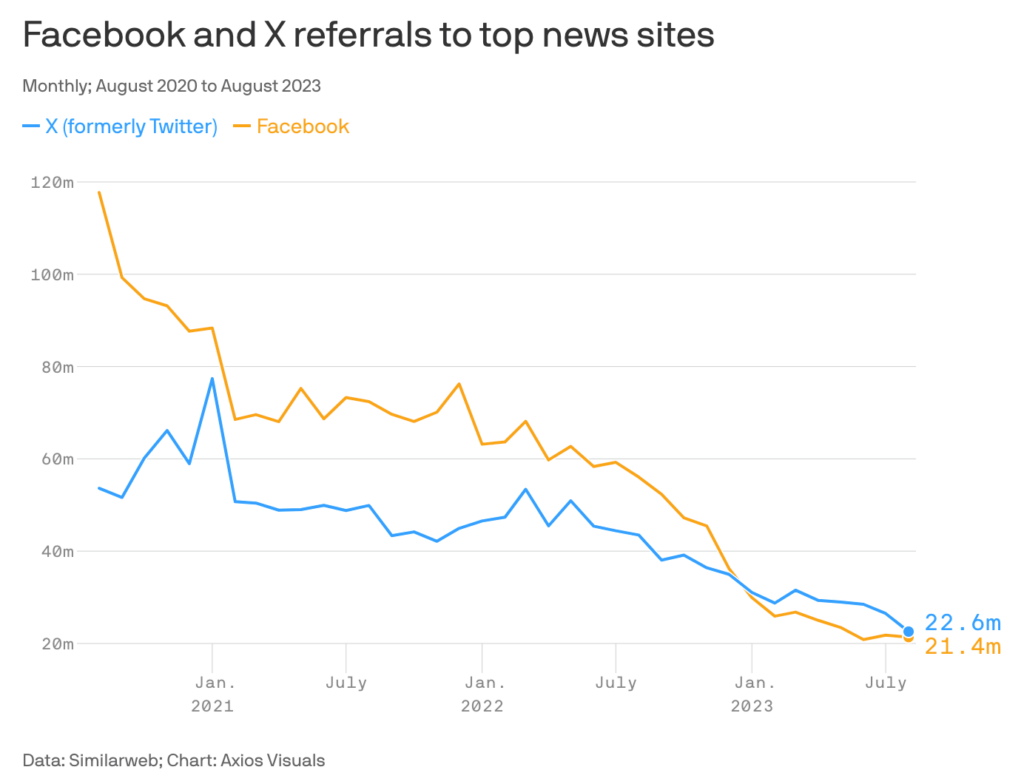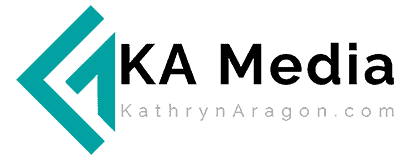Frustrated by declining organic traffic? You’re not alone.
For years, businesses have leveraged user-generated content (UGC) platforms as free distribution channels to get in front of their ideal audience.
But the game has changed.
What are UGC platforms? They’re sites like Google, LinkedIn, Facebook, and Medium that have built a business around your content. These platforms give us reach, traffic, and engagement—all while benefiting from our content.
Today, UGC platforms are shifting from traffic drivers to audience gatekeepers. Algorithms deprioritize external links. Organic reach is at an all-time low. Even Google, whose entire business was built on sending users to other sites, is hoarding traffic by answering queries within search results.
It’s frustrating, but here’s the real takeaway:
UGC platforms are no longer your best source of organic traffic. They’re your new CRM.
Instead of fighting the algorithm, we need to rethink how we use these platforms. The brands that thrive will be those that treat UGC platforms as relationship engines, not just traffic funnels.
Let’s break it down.
How UGC Platforms Became Traffic Hoarders
Once upon a time, UGC platforms benefited from giving businesses exposure. You created content, people engaged with it, and both you and the platform won.
But today, these platforms prioritize their own growth over yours:
🔹 Google’s AI Overviews and Featured Snippets answer user queries without clicks.
🔹 Facebook & Instagram throttle outbound links, forcing brands to create platform-native content.
🔹 LinkedIn rewards conversations, not click-throughs, pushing link-based posts out of feeds.
🔹 Medium’s recommendation engine increasingly favors internal posts over external sources.
The result? Traffic has plummeted.
- Facebook referral traffic is down 80% since September 2020 (Axios).
- X (Twitter) referrals are down 60% in the same period (Axios).
- Google is sending less traffic to blogs as it prioritizes AI-generated answers.

These platforms no longer want to send people to you. They want to own the audience themselves.
So how do we adapt?
The New Playbook: Treat UGC Platforms Like Your CRM
Instead of treating UGC platforms as free traffic sources, we need to treat them as engagement hubs.
The new goal isn’t clicks — it’s conversations, community, and credibility.
💡 Think of it this way:
Google, LinkedIn, and Meta aren’t distribution channels. They’re interactive databases where you build relationships, nurture engagement, and convert attention into long-term business.
How to Win in This New Ecosystem
1️⃣ Optimize for On-Platform Engagement, Not Just Clicks
If platforms don’t want people to leave, don’t force them to. Focus on building relationships where people are.
- For LinkedIn: Create “comment-driven” posts instead of link-based ones. Spark discussions.
- For Google: Optimize for AI Overviews & Featured Snippets. Make your content the best possible answer.
- For Meta: Prioritize native content — Reels, Stories, and on-platform articles.
The more engagement you earn inside a platform, the more the algorithm rewards you.
2️⃣ Build Your Brand Authority (or Get Buried)
UGC platforms prioritize recognizable brands. If you’re not one, you won’t get visibility.
- Become a known name in your industry. Consistency matters more than ever.
- Develop a signature style. Whether it’s your voice, visuals, or content themes—become recognizable.
- Stay top-of-mind. People engage with brands they already trust. The more often they see you, the more likely they are to engage.
The bottom line: If people recognize you, platforms will push your content higher.
3️⃣ Turn Engagement Into Owned Relationships
If platforms own your audience, you need to create direct connections to break free.
- Prioritize Email & SMS: Move engaged followers into channels you control.
- Use DMs & Comments Strategically: Personalized conversations lead to deeper relationships.
- Host Live Events: Webinars, panels, and LinkedIn Live sessions create high-value interactions.
The goal is simple: Own the relationship, even if you don’t own the traffic.
4️⃣ Use UGC Platforms as a CRM for Lead Nurturing
Think of UGC platforms like a pipeline, not a funnel. Instead of just trying to drive leads out, nurture them inside.
- LinkedIn → Networking & Authority
- Instagram → Community & Visibility
- Google → Search Intent & Credibility
- YouTube → Long-Form Education & Trust-Building
Example: Instead of driving traffic from LinkedIn to a sales page, use it to start meaningful conversations that lead to DMs, email sign-ups, and direct sales.
The Future: Marketing Inside the Walled Gardens
Twenty years ago, every brand needed a website.
Ten years ago, content marketing and SEO were the holy grail.
Today? You need a walled-garden strategy.
Platforms aren’t going to reverse course and start sending free traffic again. Instead, they’re going to keep users inside their ecosystems.
That means:
- The businesses that win will be the ones who adapt.
- The goal is no longer just traffic. It’s engagement, relationships, and recognition.
- Instead of gaming the algorithm, build credibility inside the system.
We can’t fight the shift, but we can use it to our advantage.
So the question is: How are you using UGC platforms differently in 2025?
Final Thoughts
The days of relying on UGC platforms for free organic traffic are over. But that doesn’t mean opportunity is gone — it’s just moved.
Instead of asking, How do I get more clicks?
Ask, How do I become unmissable on the platforms where my audience already lives?
That’s the new playbook for growth. 🚀


